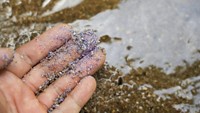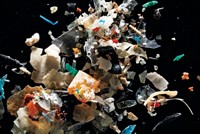Advertisement
Grab your lab coat. Let's get started
Welcome!
Welcome!
Create an account below to get 6 C&EN articles per month, receive newsletters and more - all free.
It seems this is your first time logging in online. Please enter the following information to continue.
As an ACS member you automatically get access to this site. All we need is few more details to create your reading experience.
Not you? Sign in with a different account.
Not you? Sign in with a different account.
ERROR 1
ERROR 1
ERROR 2
ERROR 2
ERROR 2
ERROR 2
ERROR 2
Password and Confirm password must match.
If you have an ACS member number, please enter it here so we can link this account to your membership. (optional)
ERROR 2
ACS values your privacy. By submitting your information, you are gaining access to C&EN and subscribing to our weekly newsletter. We use the information you provide to make your reading experience better, and we will never sell your data to third party members.
Toxicology
Environmental toxicologist wants to understand how microplastics affect human health
Stephanie Wright of King’s College London discusses what’s known about microplastics and how much more there is to learn
by Alla Katsnelson, special to C&EN
April 19, 2020
| A version of this story appeared in
Volume 98, Issue 15

Microplastics—tiny plastic particles less than 5 mm long—were first identified in the ocean and are now ubiquitous in the environment. They form from disintegrating plastic pollution and lurk in the food we eat, including fish, shellfish, and even table salt, sugar, and tea. Because some microplastics are the size of dust, we also breathe them in when they land in our nose and mouth. But researchers are just beginning to probe the possible effects of microplastics on human health. Stephanie Wright, an environmental toxicologist at King’s College London, is leading that charge.
Vitals
▸ Hometown: Sheffield, England
▸ Current position: UK Research and Innovation Ernest Rutherford Fellow, MRC Centre for Environment and Health, King’s College London
▸ Education: BS, marine biology, Newcastle University; PhD, biosciences, University of Exeter
▸ Favorite molecule: Any type of luciferin, because bioluminescence blows my mind
▸ Hobby: Listening to records, mostly mid-1960s American soul and world disco
Wright began her research career studying how microplastic pollution affects marine wildlife but was soon drawn to exploring human exposure. Now, her lab is among the first to begin studying whether microplastics in the air might have negative health effects similar to those from inhaling other types of particulate pollution.
Alla Katsnelson talked with her about her work on air exposure to microplastics and the methodological challenges that dog this emerging field.
What do we know so far about how microplastics affect human health?
Researchers have begun to study the toxicity of microplastics, typically using human cell lines, but evidence on people’s actual exposure is lacking. One route of exposure is food, but published analyses of food exposure have assessed just 15% of the caloric intake of an average North American adult. There’s a substantial missing component for which we have no information, and even for the 15% that’s being addressed, there is only a handful of papers so far.
With respect to exposure to airborne particles, we really know very little. Most studies have focused on how microplastics are deposited out of the atmosphere. But we really need to know what’s actually suspended and what’s of a size small enough to enter our respiratory tract and our lower airways. That’s just a massive knowledge gap at the moment.
Based on what we do know, there’s no reason to worry yet—studies so far, on ingestion via both food and air, indicate exposure is low. However, that really reflects only a small component of what we are likely exposed to. We generally consider microplastics to be chemically inert, but whether they gain any functional groups or oxidative potential because of, for example, ultraviolet-triggered oxidation—that’s all very understudied.
How is your lab studying microplastic exposure?
We are studying air particles that are a so-called health-relevant size that can enter the central and distal parts of the human lung. We are also investigating whether we can detect microplastics in human lung tissue and whether we can find any links to health outcomes.
Additionally, we are doing some in vitro studies to examine the toxicology of these particles. The big question is the relative importance of microplastics. Humans are obviously exposed to thousands, if not hundreds of thousands or millions, of particles in a cubic meter of air, so it’s vital to understand the relative proportion of microplastics within those particles and their relative potency.
Why is studying microparticle exposure challenging?
People studying microplastics in the last 10–15 years have largely used microspectroscopy—microscopes coupled to infrared or near-infrared lasers—to detect them. Until recently, that has been labor intensive and subject to experimenter bias because it involves a person looking down a microscope and deciding, based on whether they think they see plastic particles, whether to take a spectral reading. That has also restricted the sizes of particles that an experimenter could see. People are starting to use automated imaging systems to remove the bias, and new instruments can push the limits of detection down to a few micrometers.
Now the challenge is coupling detection to traditional air-quality measurement techniques. These generally rely on continuous online monitoring, but there are no online systems for measuring microplastics yet, so we have to essentially rely on protocols or instruments that will collect samples that we can retrospectively analyze. Overall, the methods really aren’t standardized.
What can we learn from how microplastics affect animals?
One issue thought to pose a problem for animals in the wild is that microplastics can compromise their ability to store and assimilate energy. For example, 5 or 10 µm microplastic particles in the guts of microscopic plankton are going to occupy quite a lot of space. In humans, that’s obviously not going to be the case, because our gut is huge. But there have been some hints that the oxidative stress of inflammation might be another pathway through which microplastics can cause harm—which might be similar in humans and other animals. So far only a handful of studies have come out on this, so there is not really any conclusive evidence.

Alla Katsnelson is a freelance writer. A version of this story first appeared in ACS Central Science: cenm.ag/wright. This interview was edited for length and clarity.





Join the conversation
Contact the reporter
Submit a Letter to the Editor for publication
Engage with us on Twitter